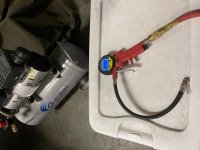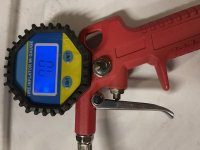PW2013STL
Active member
I use a pump similar to that on my shocks on my sleds, I find that when you have to unscrew the hose, lot's of times you will loose a little air! I can't picture how many times you would have to pump the thing to do a car tire size unit!! Think you would get very tired!!
That's why I use my air compressor to get close. A lot of pumps to add air, but it's free exercise:yikes:


